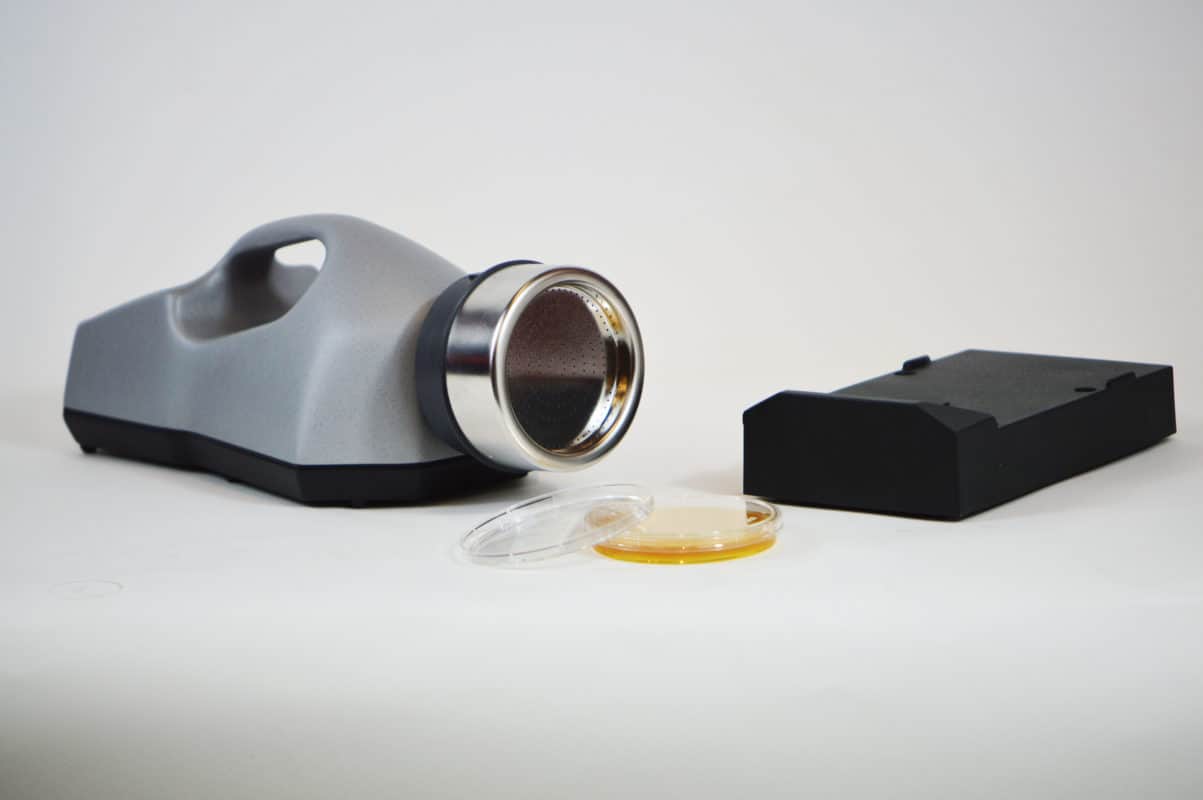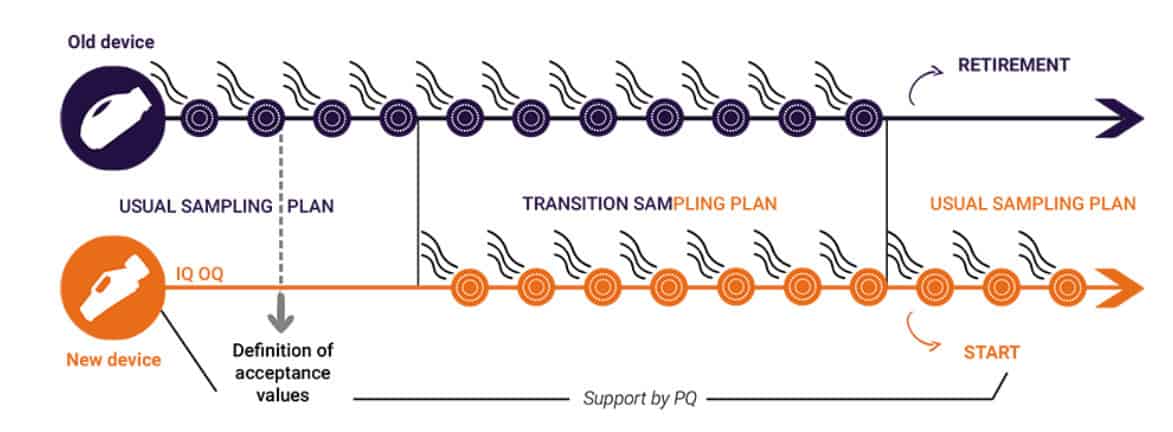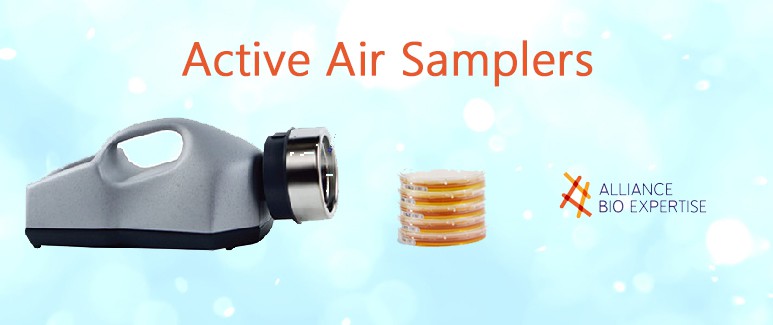Active air samplers: Why you need one in your lab
Increasing regulation around environmental monitoring has resulted in active air samplers becoming a staple in almost every laboratory. Airborne bacteria, yeasts and moulds can severely impact pharmaceutical and medical device manufacturing operations and present a real threat to product and patient safety. Although microbiological monitoring of the air is a well-established process in cleanrooms and other heavily regulated environments, its importance is often overlooked, especially in food and drink manufacturing.

How air monitoring is performed?
Air monitoring can be carried out in two ways: passive or active
- Passive air monitoring is performed using ‘settle plates’ which expose a non-selective agar surface to the environment for a given period before incubating and counting the resulting colonies. Since this method does not measure specific volumes of air and cannot detect smaller particles, it only provides a qualitative result.
- Active air sampling is most commonly performed using an air sampler which draws in a known volume of air through a perforated sampling head using a fan. The sampled air then impacts the surface of an agar plate. Once the necessary volume of air has been sampled, the plate can be removed and incubated. When using active air sampling, the resulting CFU on the surface of the agar will give a quantitative estimate of the bioburden of the sampled air. The rate of airflow can be altered to sample a large volume of air in a relatively short space of time. This is advantageous in the sampling of cleanrooms and other environments where very low numbers of microorganisms can be expected.
Our partner Alliance BioExpertise (ABE) has an interesting blog post which outlines the difference between the colonies counted on the air monitoring plate and the actual number of colonies present in the air.
Making the switch to an active air sampler
It is essential that air samplers are properly validated and calibrated to ensure the results are representative and accurate. When making the switch from settle plates to an air sampler, it is recommended to carry out both methods in parallel during the initial qualification period. This allows technicians to compare results and design the best air sampling plan for their needs. When transitioning to a new type of air sampler, it is important that normal monitoring operations are maintained to prevent conformance issues. In order to minimise disturbance to routine sampling, a transition sampling plan should be developed using the old and new instrument for a defined period to cover the IQOQ, training and SOP preparation. This will ensure a smooth transition and take the stress out of the process.

Source: Alliance Bio Expertise
Which air sampler should I choose?
Which air sampler should I choose?
If you are looking for a new air sampler, MSC offers the Airwel and Airwel Plus by Alliance BioExpertise. The Airwel comes with a flow rate of 100L/min or 200 L/min on Petri dishes of both 90 mm and 55 mm. The head of the Airwel can be supplied in stainless steel, autoclavable polycarbonate, or single-use (sterile and double packed) formats. The Airwel Plus comes with full traceability, integrated Bluetooth module and a wireless induction charger for improved battery life and a fully cleanable unit.
Have you ever sent back an air sampler for calibration, and noticed that the airflow was deviated, leading you to question the whole year’s results because the moment of deviation cannot be defined? A unique feature of the Airwel Plus is the ability to ‘Self Test’ the airflow, making it possible to check the performance of the air sampler between calibrations and ensure accurate colony counts year-round.
If you would like to know more or to arrange a demo, feel free to get in touch with one of our technical specialists.


